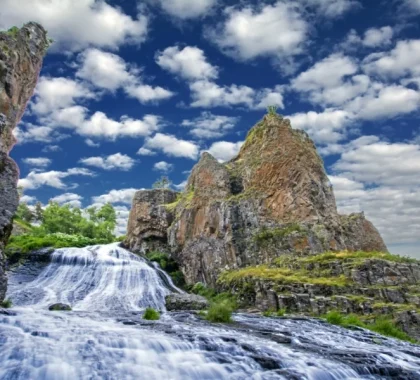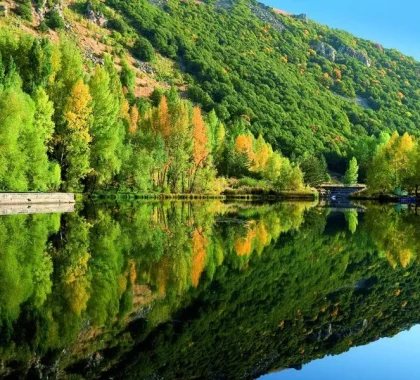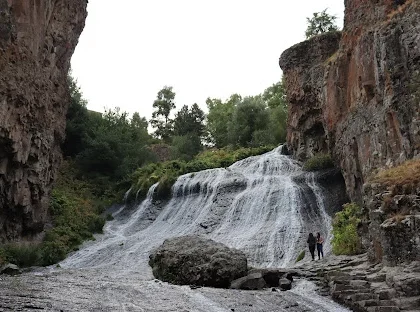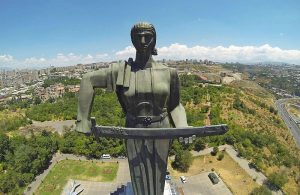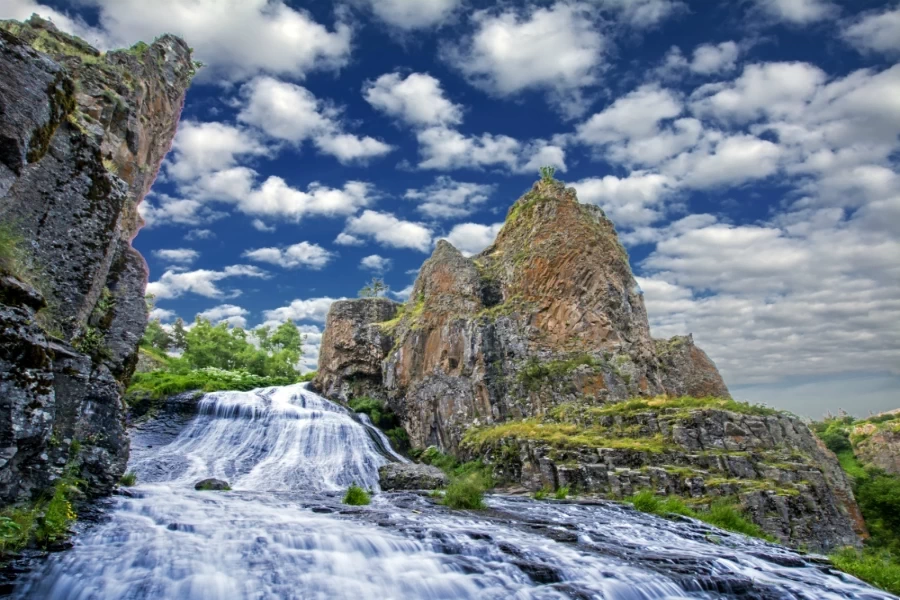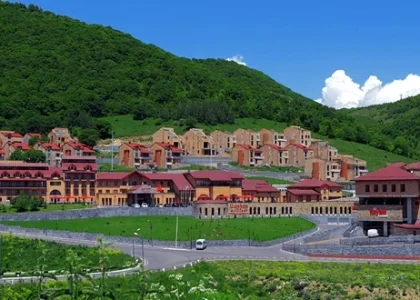Jermuk is a mountainous city and spa town located in the Jermuk Municipality of the Vayots Dzor Province in southern Armenia, 53 kilometers east of the provincial capital, Yeghegnadzor. It was one of the popular destinations for therapeutic tourism in the Soviet Union.
Features and Activities:
Jermuk is famous for its hot springs and bottled mineral water. The city attracts tourists with its fresh air, waterfalls, artificial lakes, hiking trails, surrounding forests, and mineral water pools. Jermuk is developing into a modern center for tourism and health services. Additionally, it is a major chess center, hosting many international tournaments.
Name Origin:
The city’s name is derived from the Armenian word “Jermuk,” meaning “warm mineral spring.” It was first mentioned in the 13th century by historian Stepanos Orbelian in his work “History of the Province of Syunik.”
History:
Jermuk is located in an area that was historically part of the Vayots Dzor canton of the Syunik Province in Greater Armenia. Although mentioned by Stepanos Orbelian in the 13th century, the remains of an ancient cyclopean fortress and the ruins of an 8th-century basilica church indicate that the area was inhabited long before. The region was ruled by the Syunik dynasty between the 10th and 13th centuries. The princes considered the mineral springs of Jermuk to be healing and built several pools filled with these waters, making the small town a holiday destination.
Persian and Russian Rule:
In the 16th century, Eastern Armenia fell under Safavid Persian rule, and Jermuk became part of the Erivan Province and later the Erivan Khanate. During this period, the area faced frequent invasions by Turkish and Iranian tribes, leading to the destruction of many landmarks and prosperous villages and the displacement of the population.
Under the Treaty of Turkmenchay signed between the Russian Empire and Persia in 1828, Jermuk became part of the Russian Empire. The city experienced significant growth and development during Russian rule. In the 1830s, Russian geologist G. Voskoboynikov conducted the first scientific studies on Jermuk’s springs, and his observations were published in the “Mining Journal” in 1831 and the “Caucasian Calendar” in 1855.
Modern Development:
Jermuk underwent substantial development during the Soviet period. The first sanatorium opened in 1962, followed by the second in 1963 and the spa center in 1966. In 1967, Jermuk was granted the status of a city of republican significance. With the development of services, the population grew to about 9,000 in the 1980s. After Armenia gained independence in 1991, Jermuk experienced a population decline due to the economic crisis following independence. However, it has begun to regain its status as a tourist and health destination.
Geography and Climate:
Jermuk is situated at an elevation of 2,080 meters above sea level in the Vayots Dzor mountains, amidst dense forests, on a plateau divided into two parts by the Arpa River valley. The region has a humid continental climate, offering mild weather in the summer and cold, snowy winters.
Culture and Economy:
Jermuk is home to a branch of the National Gallery of Armenia and several historical landmarks, including ancient caves and small medieval churches. The city is also known for its annual “Snowman” festival.
Jermuk is a major center for therapeutic tourism in Armenia, with numerous resorts and health hotels. It is also one of the main winter sports centers in the country.
Jermuk is renowned for its mineral water bottling industry, with several large factories, most notably the Jermuk Group, founded in 1999.
Conclusion:
Thanks to its strategic location and natural features, Jermuk continues to attract tourists and those seeking natural therapy and recreation, enhancing its status as one of Armenia’s top tourist destinations.






